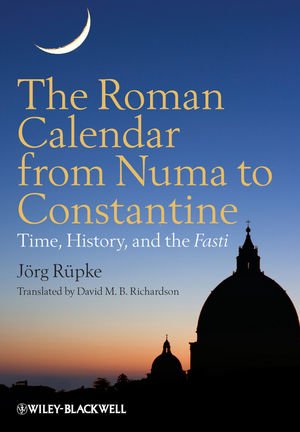

Most ebook files are in PDF format, so you can easily read them using various software such as Foxit Reader or directly on the Google Chrome browser.
Some ebook files are released by publishers in other formats such as .awz, .mobi, .epub, .fb2, etc. You may need to install specific software to read these formats on mobile/PC, such as Calibre.
Please read the tutorial at this link. https://ebooknice.com/page/post?id=faq
We offer FREE conversion to the popular formats you request; however, this may take some time. Therefore, right after payment, please email us, and we will try to provide the service as quickly as possible.
For some exceptional file formats or broken links (if any), please refrain from opening any disputes. Instead, email us first, and we will try to assist within a maximum of 6 hours.
EbookNice Team

Status:
Available0.0
0 reviews
ISBN-10 : 0470655089
ISBN-13 : 9780470655085
Author: Jörg Rüpke, David M. B. Richardson
This book provides a definitive account of the history of the Roman calendar, offering new reconstructions of its development that demand serious revisions to previous accounts.
Examines the critical stages of the technical, political, and religious history of the Roman calendar
Provides a comprehensive historical and social contextualization of ancient calendars and chronicles
Highlights the unique characteristics which are still visible in the most dominant modern global calendar
1 Time’s Social Dimension 1
2 Observations on the Roman fasti 6
2.1 A Republican Version 6
2.2 Forms and Functions 8
2.3 The fasti and the Birth of Augustan Epigraphy 14
2.4 The Question of the Archetype 21
3 Towards an Early History of the Roman Calendar 23
3.1 Notions of a Prehistoric Calendar 23
3.2 The Structure of the Month 24
3.3 Market Cycles 32
3.4 Modes of Dating 34
4 The Introduction of the Republican Calendar 38
4.1 Timing and Motivation 38
4.2 The Character and Significance of the Reform 41
5 The Written Calendar 44
5.1 Gnaeus Flavius 44
5.2 NP Days and Feast-names 50
5.3 Cultic and Linguistic Details 55
5.4 The Purpose of the fasti 58
5.5 The Law of Hortensius 59
5.6 Implications for the Historiography of Roman Religion 64
5.7 Variants on Stone and Paper 66
6 The Lex Acilia and the Problem of Pontifical Intercalation 68
6.1 The Nature of the Measures 68
6.2 The Ritually Correct Method of Intercalation 69
6.3 Problems of Intercalation 79
6.4 Regulating Intercalation by Means of Laws 83
7 Reinterpretation of the fasti in the Temple of the Muses 87
7.1 Marcus Fulvius Nobilior, Triumphator 87
7.2 Temple Dedications in the fasti 95
7.3 Ennius 105
7.4 All fasti are Fulvian fasti 108
8 From Republic to Empire 109
8.1 Caesar’s Calendar Reform 109
8.2 The Calendar as Collective Memory 121
8.3 Augustus and the Power of Dates 124
8.4 The Calendar as Roman Breviary 134
9 The Disappearance of Marble Calendars 140
10 Calendar Monopoly and Competition between Calendars 146
10.1 One Calendar 146
10.2 Coexisting and Competing Developments 153
10.3 Eras 156
10.4 The Calculation of Easter 157
10.5 Weekly Cycles 160
10.6 Fasti Christiani? 169
11 The Calendar in the Public Realm 175
Abbreviations 183
References 185
Sources Index 209
General Index 215
who changed the roman calendar
how did the roman calendar work
history of roman calendar
how many days were in the roman calendar
the roman calendar
Tags: The Roman Calendar, Numa, Constantine, Time, History, the Fasti, Jörg Rüpke, David Richardson